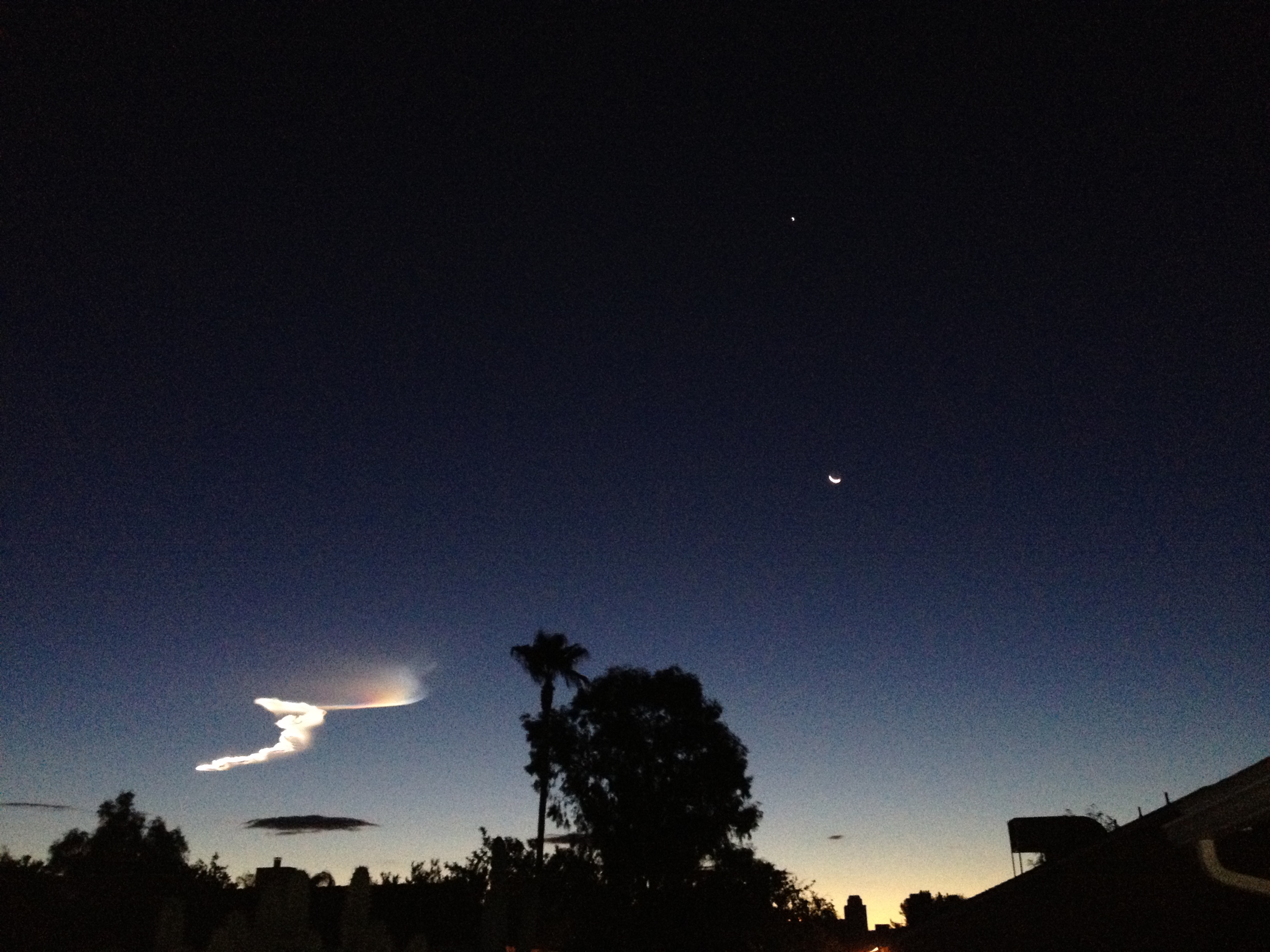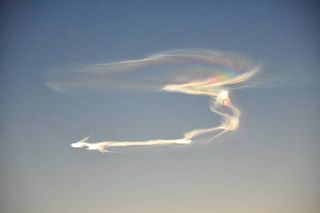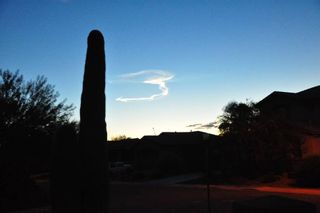Dazzling Army Missile Test Triggers UFO Reports in Western US

A spectacular U.S. Army missile test in New Mexico Thursday (Sept. 13) lit up the predawn sky over the southwestern United States, triggering a flood of frantic UFO reports and hundreds of calls to military officials from as far away as Denver and Los Angeles.
The amazing night sky sight was created by the launch of an Army Juno missile early Thursday from Fort Wingate in New Mexico, which soared high into the atmosphere on its way to the White Sands Missile Range to be intercepted by a Patriot missile. The unarmed Juno rocket flew so high that its long contrail reflected sunlight from the yet-to-rise sun, sparking a dazzling night sky light show.

"We kind of hope folks enjoy the light show we put on over the western U.S.," White Sands Missile Range spokeswoman Monte Marlin told SPACE.com.
Marlin said her office received more than 100 calls and a flood of emails from observers who saw the Juno rocket's contrail from states across the Southwest. According to the Associated Press, the missile test led to widespread reports from people who regarded the shiny rocket exhaust as a UFO sighting in the sky.
Marlin said she received calls from as far away as Denver, Salt Lake City in Utah, Las Vegas and Los Angeles reporting the sighting.
"Conditions were just right for it to be seen from far away," Marlin said, adding that the view was caused when the Juno missile's exhaust froze in the upper atmosphere. "When it freezes, those little ice crystals act like prisms to reflect sunlight. It creates that amazing light show."
Because the contrail crossed several layers of the Earth's atmosphere, it was sculpted by high altitude winds, perhaps surprising observers used to seeing the straight-line contrails from airplanes, she added.
Get the Space.com Newsletter
Breaking space news, the latest updates on rocket launches, skywatching events and more!
In Scottsdale, Ariz., observer Ryan Eiger was walking his dogs before sunrise and snapped a photo of the Juno missile contrail shining with the moon and Venus.
"I looked up quickly noticing the contrail in the east. I ran and got my iPhone and it happened to be just north of both the moon and Venus," Eiger said in an email. "The contrail was amazing. It sort of resembled a cloud except for the very colorful tail it had."

The wispy, but still bright, Juno contrail was also photographed by Linda and Dick Buscher of Anthem, Ariz., just outside of Phoenix, who also sent their photos into SPACE.com.
Marlin said Thursday's missile launch was the 14th test of its kind since 1998. Sometimes the Juno contrails have been spotted from far-off locales, and other times not. Prior to Thursday's launch, the furthest reports from observers came from Phoenix and Colorado, she said.
"It was fun, the number of calls that we received yesterday," Marlin said. "They were mostly incredulous, like 'That was so cool!'"
You can follow SPACE.com Managing Editor Tariq Malik on Twitter @tariqjmalik and SPACE.com on Twitter @Spacedotcom. We're also on Facebook & Google+.
Join our Space Forums to keep talking space on the latest missions, night sky and more! And if you have a news tip, correction or comment, let us know at: community@space.com.

Tariq is the Editor-in-Chief of Space.com and joined the team in 2001, first as an intern and staff writer, and later as an editor. He covers human spaceflight, exploration and space science, as well as skywatching and entertainment. He became Space.com's Managing Editor in 2009 and Editor-in-Chief in 2019. Before joining Space.com, Tariq was a staff reporter for The Los Angeles Times covering education and city beats in La Habra, Fullerton and Huntington Beach. In October 2022, Tariq received the Harry Kolcum Award for excellence in space reporting from the National Space Club Florida Committee. He is also an Eagle Scout (yes, he has the Space Exploration merit badge) and went to Space Camp four times as a kid and a fifth time as an adult. He has journalism degrees from the University of Southern California and New York University. You can find Tariq at Space.com and as the co-host to the This Week In Space podcast with space historian Rod Pyle on the TWiT network. To see his latest project, you can follow Tariq on Twitter @tariqjmalik.